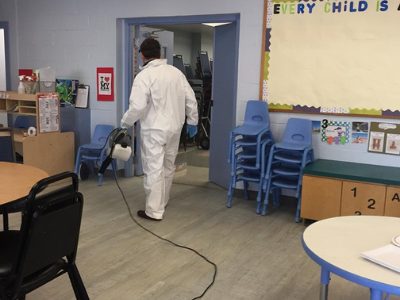Where are all the workers? The labor shortage
.jpg)
Covid-19, which began 30 months ago, is only partially to blame. Reported infections have plummeted, pandemic restrictions are nearly gone, and life is almost back to normal. However, this isn't true for the labor force.
Millions of workers are out of work due to the virus, which reduces their productivity and hours. Businesses are disrupted, and costs rise.
Covid-19 is still affecting absenteeism, but other factors contribute to worker shortage
This year, the Labor Department estimates that nearly 630,000 more workers missed a week of work because of illness than in years before the pandemic. That equates to millions of lost work hours this year alone. Covid-19 has definitely had an impact on our workforce, but it’s more complicated than a singular reason.
%202.jpg?width=400&height=300&name=2022%20November%20Blog%20images%20(400%20x%20300)%202.jpg)
Massachusetts recently reported the fourth straight monthly decline in the state’s labor force, and the largest since January 2021. The economy cannot expand without a growing supply of workers.
An economist from the University of Massachusetts Dartmouth, Michael Goodman, was interviewed by the Boston Globe. Several factors may prevent people from entering the workforce, according to him:
- Inadequate day care capacity
- Mismatch between the skills and interests of workers and open jobs
- Immigration restrictions
- Spike in retirements since the start of the pandemic
During surges of infections, employers must keep more employees on payroll to ensure that work continues uninterrupted. They also need to cross-train staff and standardize processes to ensure that one person's absence does not slow down a project. Many companies have become inefficient as a result.
And what about long Covid? Louise Sheiner and Nasiha Salwati of the Brookings Institution estimate that about 420,000 workers ages 16-64 likely left the labor force because of long COVID.
Which states and industries are suffering the most?
According to US Chamber of Commerce, this is a national issue significantly affecting 18 states. Locally, Massachusetts and Rhode Island are heavily impacted, while Connecticut is faring a bit better.
- Massachusetts has 59 unemployed workers for every 100 open jobs.
- Rhode Island has 66 unemployed workers for every 100 open jobs.
- Connecticut has 86 unemployed workers for every 100 open jobs.
Which industries are most affected by the labor shortage?
During "maskless" winter, absenteeism is expected to rise
A perfect storm may be brewing, known as the "triple threat": Covid and new variants, flu, and respiratory syncytial virus (RSV). Due to two previous flu seasons of masking up, our immune systems have been weakened. In the coming months, medical experts anticipate a spike in hospitalizations.
%204.jpg?width=400&height=300&name=2022%20November%20Blog%20images%20(400%20x%20300)%204.jpg)
These viruses, whether contracted by our schoolchildren or the aging population, result in increased absenteeism among our employees. Parents are missing work at record levels, says Washington Post. Whether parents are coming down with flu or staying home to care for elders or schoolchildren, businesses need to be prepared to handle these situations.
15 Tips on how to Keep Top Talent
As a result of a mass disabling event and other factors, the nation is facing a shortage of workers. There is no simple solution. The next big question is: How can businesses retain their workers?
%205.jpg?width=400&height=300&name=2022%20November%20Blog%20images%20(400%20x%20300)%205.jpg)
Companies save money and time by retaining talent. It costs an average of $4,683 to recruit a new employee, according to the Society of Human Resource Management. From “The Great Resignation” to “The Great Realignment” and now “The Great Retainment”, knowing how to keep your workforce from jumping ship is crucial.
Built In, a leading online community for startups and tech companies, shares their strategies:
- Create a positive workplace culture
- Compensate well
- Offer robust benefits
- Support employee wellness
- Provide flexible work arrangements when possible
- Invest in strong leadership
- Communicate and be transparent
- Prioritize mentorship and employee support groups
- Let employees be heard
- Recognize good work
- Share constant feedback with employees
- Encourage career growth at the company
- Give continuous learning opportunities
- Use the latest tools and technology
- Build a diverse work environment
Wondering about increased cleaning for your workplace? Here’s a comprehensive study that shows exactly what workers are saying about cleanliness.
Lacking janitorial staffing?
Concerned about a staffing shortage and whether you are using the right cleaning service for your workplace? It's not too late to find the perfect janitorial team that will keep your workplace clean and safe. Look for solid custodian referrals and consult with System4 IPS.

Which custodian or janitorial team is best for you? System4 IPS specializes in creating customized janitorial programs that meet the unique need of businesses like yours!
If your workplace experiences a singular COVID-19 positive case or outbreak, call System4 IPS and schedule your disinfection service today. Our professional team listens to your needs, requirements, and timing. See our many satisfied customer testimonials and public Google ratings.

%203.jpg?width=500&height=375&name=2022%20November%20Blog%20images%20(400%20x%20300)%203.jpg)

.jpg)
.jpg)